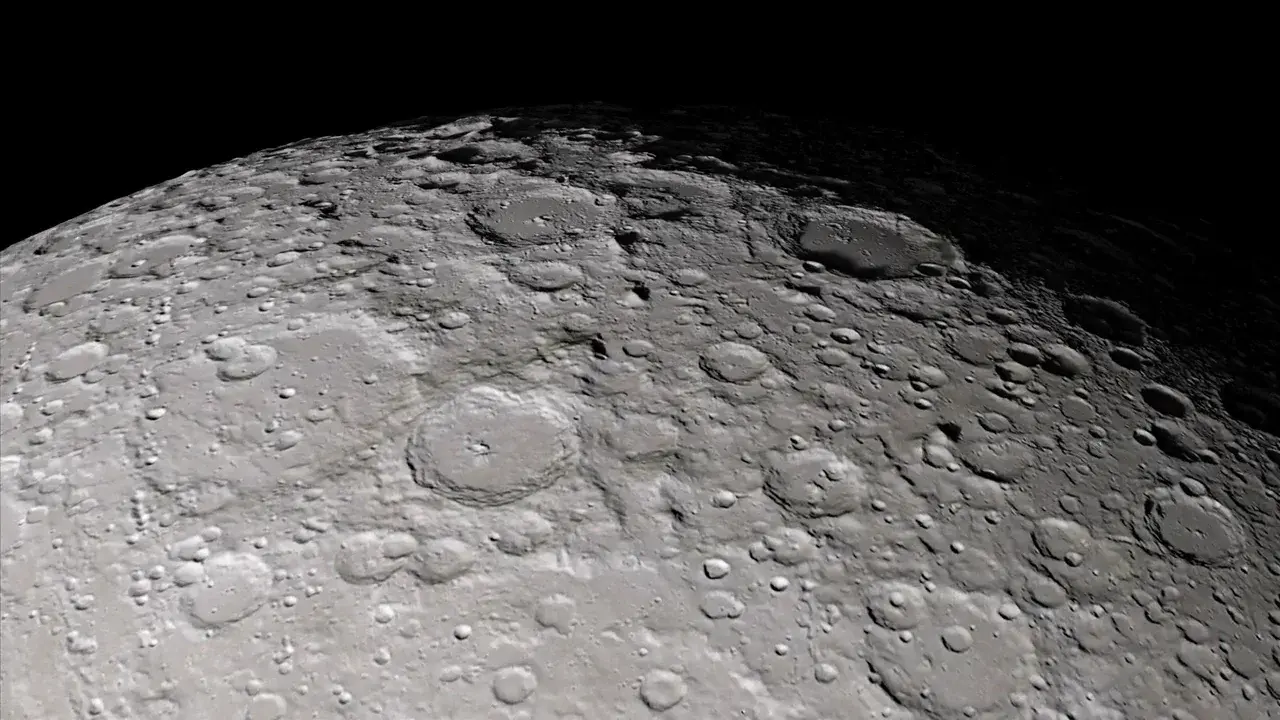- cross-posted to:
- nottheonion
- cross-posted to:
- nottheonion
Strange that the article would say that when, in point of fact, the US is also working plans for lunar nuclear power. It’s really the only sensible way to power a moon base with current technology, so anyone who is considering one is working designs for a nuclear power plant.
How do you cool a nuclear reactor on the moon?
The ground would probably work fine as a heat sink.
It’s already pretty cold
The big problem with space is overheating. Space may be cold but there is no way to get rid of that heat except for radiators. Convection doesn’t exist in a vacuum.
Right, but conduction does work on the moon. You have the ground as a giant heatsink. While the surface does get pretty hot in daylight, I am guessing that heat doesn’t go very deep so you could probably bury your cooling lines.
It just requires humans up there to dig and bury the cooling lines.
Probably a stupid question but how can it be cold if there’s no heat transfer?
it’s kindof neither.
Our normal sense of hot/cold is a measure of how hot the particles around us are. Space has so few particles, that whole paradigm breaks down.Technically space is hot since temperature is a function of average particle movement and spaceborne particles are mostly moving stupid fast. Fortunately there are very few particles in any given volume of “empty” space so that translates to space being “cold”.
Only at night.
The lunar exosphere is too skimpy to trap or spread the Sun’s energy, so differences between sunlit and shadowed areas on the Moon are extreme. Temperatures near the Moon’s equator can spike to 250°F (121°C) in daylight, then plummet after nightfall to -208°F (-133°C).
https://science.nasa.gov/moon/weather-on-the-moon/
Which sounds like a pretty big challenge for a nuclear reactor. Maybe they only plan to put them on the poles?
Go Thorium MSR and bury it underground and you don’t really have to worry about it. Might need some modification for moon gravity but otherwise seems like the best bet.
That was my first thought, but then my second thought was even more terrifying - how do you protect your nuclear power facility from celestial impacts? The moon must get pelted with thousands of little bits of space debris every day considering it has no atmosphere. All it would take is a basketball-sized meteorite to slam into the reactor chamber and possibly cause a meltdown.
Cover it with a ton of moon soil
We’ll take a second moon, cut it in half, and use it as a shield for the first moon
That’s a challenge that people are working on for sure. Likely some kind of radiant cooling, but it’s a lot of heat.
Heat also dissipates via radiation, not just conduction. I would imagine that nuclear power on the moon won’t involve hauling a lot of liquid coolant/heat exchanger/energy transfer because liquids are wicked heavy, hauling that up to orbit and then landing it is gonna take a lot of energy. They do acknowledge that cooling is an issue they’re working on.
Maybe some kind of RTG? I couldn’t find an article that said what the NASA contractors chose to build.
No, RTGs just don’t generate the kind of power you’d need. I mean, they’re awesome for generating electricity for a long time, but just not a lot of it. No, these are fission plants.
Is solar power combined with battery storage not an option?
Not really. Current battery technology is to put it lightly not the type of thing you want to rely on for long term life support. Lithium ion the current go to for rechargeable batteries physically degrades as you charge it. One of the main things you can do to reduce this is don’t fully charge the battery. For example if the battery degradation from 0%* to 100%** is a cycle then 50% to 80% is only 21% of a cycle. That’ll extend the lifetime of the battery (not the capacity) by about 5 times! That’s pretty significant but you lose out on 20% of the batteries capacity permanently, even as the capacity decreases from degradation.
You’ve probably seen the hype about Sodium batteries which are currently 50% less energy dense which just immediately means NOPE for use in space.
* Lithium ion batteries are extremely difficult to actually fully discharge (controller won’t let you)
**Lithium ion batteries should never be fully charged it causes them excessive damage so the controller prevents this from happening
They do it on the ISS though?
Although Li-Ion batteries typically have shorter lifetimes than Ni-H2 batteries as they cannot sustain as many charge/discharge cycles before suffering notable degradation, the ISS Li-Ion batteries have been designed for 60,000 cycles and ten years of lifetime, much longer than the original Ni-H2 batteries’ design life span of 6.5 years.
Electrical system of the international space station, batteries
Also related:
ISS doesn’t have a two week long Lunar Night where solar panels dont work
The eternal light idea is fascinating but even in the best case scenarios, you’d need batteries to supply all power for two full days. In the more prudent case since lives depend on it, you’d need significantly more to cover any outages
Meanwhile, 2-3 nuclear reactors strung out on different sides and with redundant connections, and you’re good for 20 years and many types of outages
Much less power for the weight, and weight is the big deal when you’re sending things from earth.
New Space Race while Americans just want healthcare.
I would settle for no fascism/the supremecist court to pull its head out of billionaires’ assholes
Look on the brightside: you can either have no healthcare and no space race or no healthcare and a space race.
Sure you are going to spend your last years dying of a preventable diabetes complication, but at least you get to see cool stuff going on. Instead of dying the same way anyhow and not seeing cool stuff.
If you other people could vote I would really appreciate it.
Why not both?
I’m all for this. This is the beginning of how all wars should be fought: On the moon. With giant robots.
How would you cool a nuclear power plant on the moon, no water?
Good question. Not all reactors by design need water as coolant. Some use molten salt, others are gas cooled.
These alternate cooling materials would likely still need to be imported though, so it doesn’t particularly make it any easier.
My main question is the effect of the lower gravity on cooling the reactor (thermal hydraulic effects). All of our current reactors are designed for 1 g use, not 0.1654 g that’s on the moon. Heat mixture rates in fluids would be different, which is important when you’re calculating effective heat dissipation.
Just for fun, go check out xkcd’s new What If video. They go into heat dissipation of a nuclear reactor in space (not the moon, but still incredibly interesting, informative, and entertaining).
deleted by creator
I should have shared, but I’m lazy.
You cool it with liquid thermal transfer and radiators. Here’s what a kilopower plant looks like, the big disk is a radiator.
Maybe only turn it on at night when the surface gets cold and conduct it into the ground or land it in a permanent shadow? The article said they planned to do it fully automated so I am guessing digging of any form is out.
You don’t just turn a nuclear power plant off.
I believe they mean inserting control rods to dampen the reactions to subcritical.
If sun is an issue, it might be simpler to set up a “beach umbrella”
With Blackjack! And Hookers!
Actually, forget the nuclear reactor and Blackjack!
Ehhh, screw the whole thing
Don’t forget the blow!
A bit of a tangent, but I’m fascinated by the idea of a few “bases” permanently orbiting between Earth and Mars as a way to make that trip in comfort, to afford more shielding, larger quarters, more amenities. You just need to get it up to speed once, then future trips are just small shuttles to dock and drop off. I wonder if we’ll ever get to that point
Them: We’re gonna put a nuke plant on the moon
Sane people: How are you going to get power back to Earth?
or: why?
Them: Did you know we’re gonna put a nuke plant on the moon?The idea is not to get the power back to earth, but to have power on the moon. Without power, you’ll never have humans living there.
Lasers. It will be powering their orbital laser platform.
lmao
I really like that TV show: For All Mankind.
It’s non-fiction 😉
Removed by mod
I’m glad somebody is doing something useful while the dying American empire flounders around doing genocides.
Removed by mod
They deny China is committing genocide against the Uyghurs. Tankies refuse to admit it. They claim it’s all Western propaganda. Obviously because otherwise, they’d have to admit their hero Xi has a flaw or two.
Well also because it’s never been independently verified, and the main guy pushing it, Adrian zenz, is a far right con artist.
Does your empty cranium echo when you talk?













